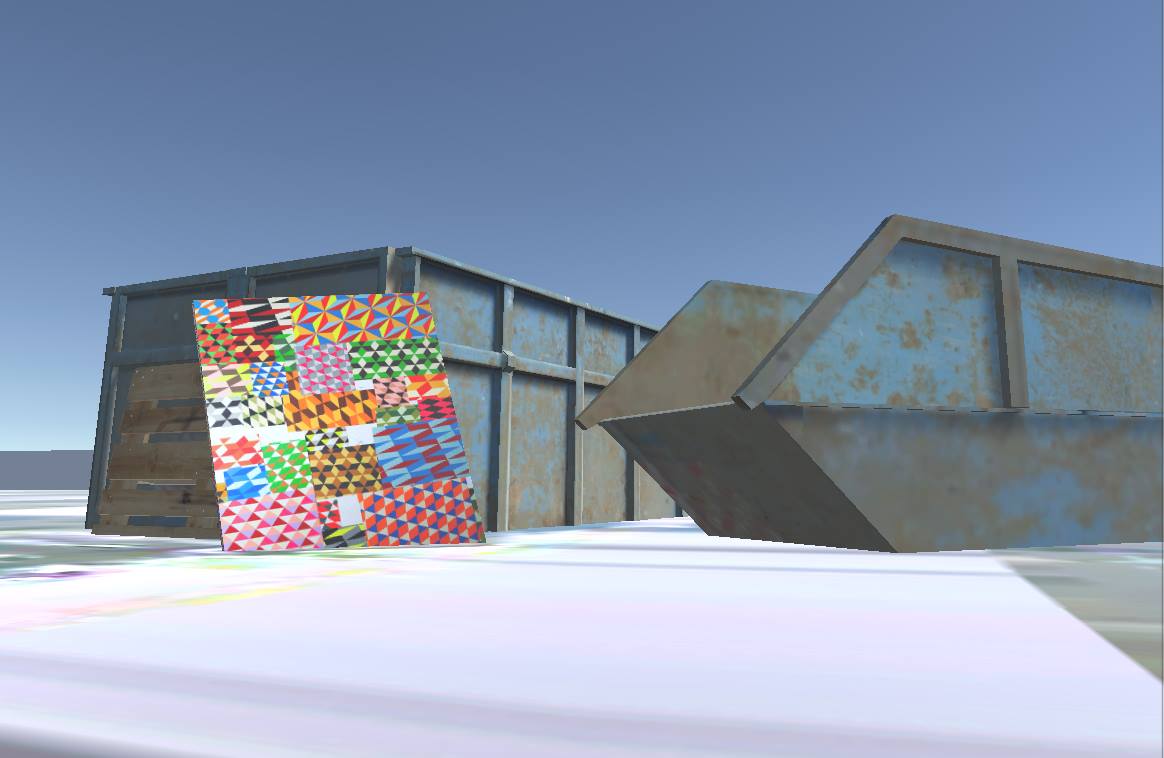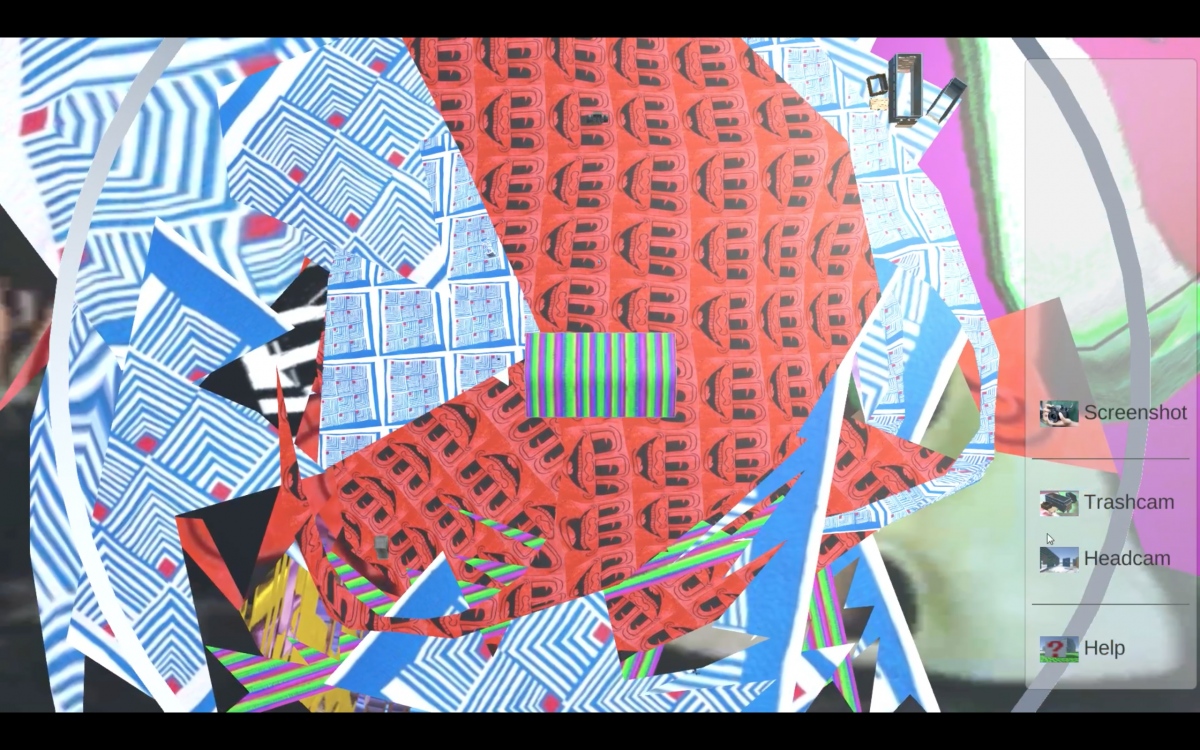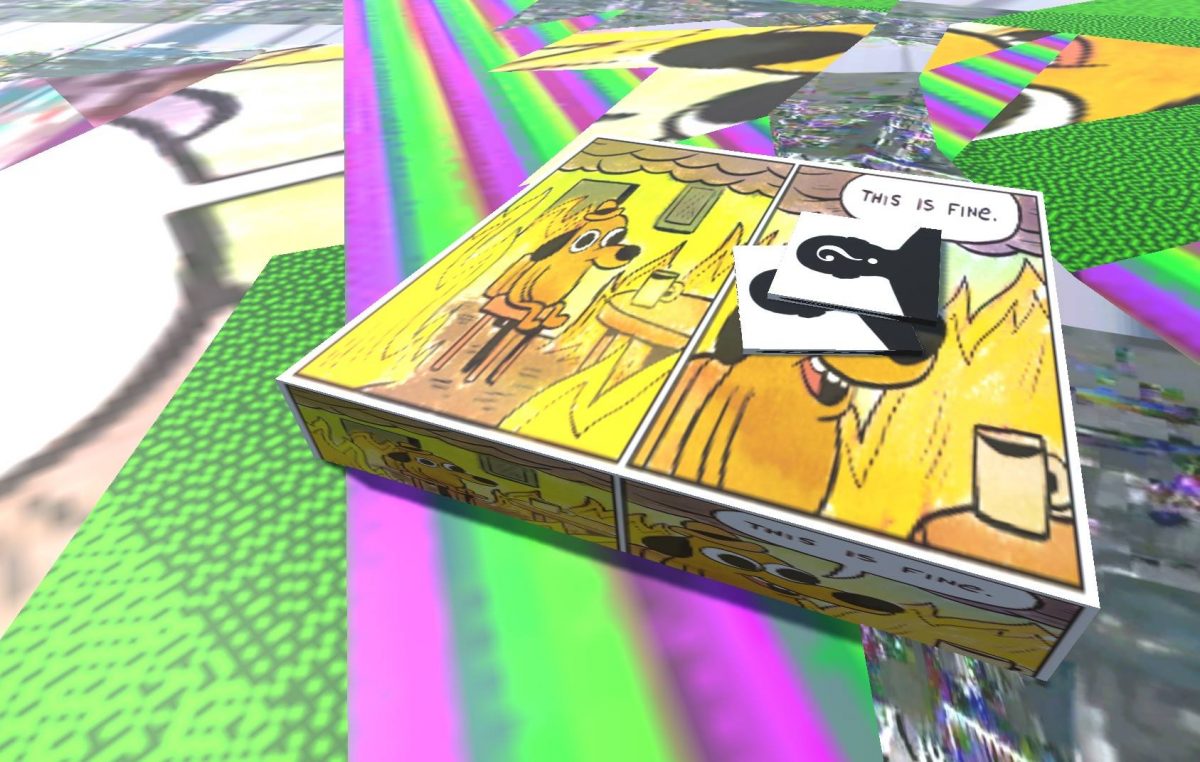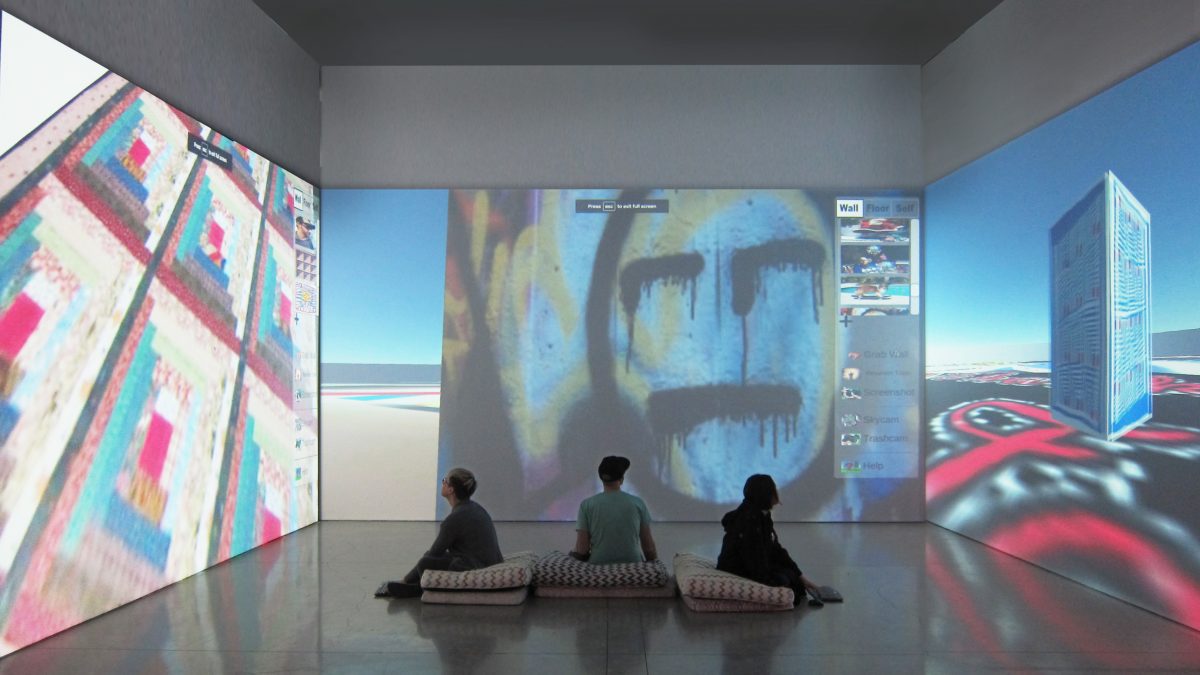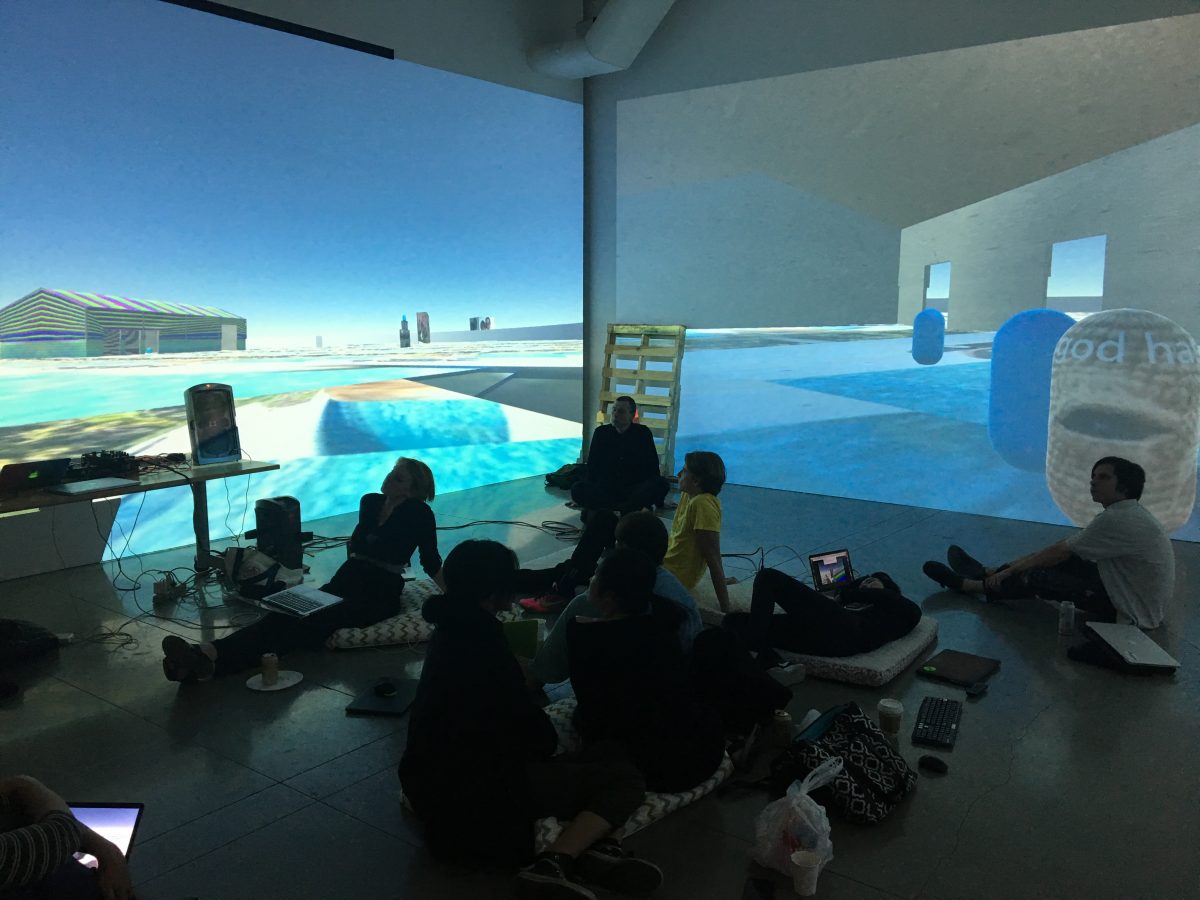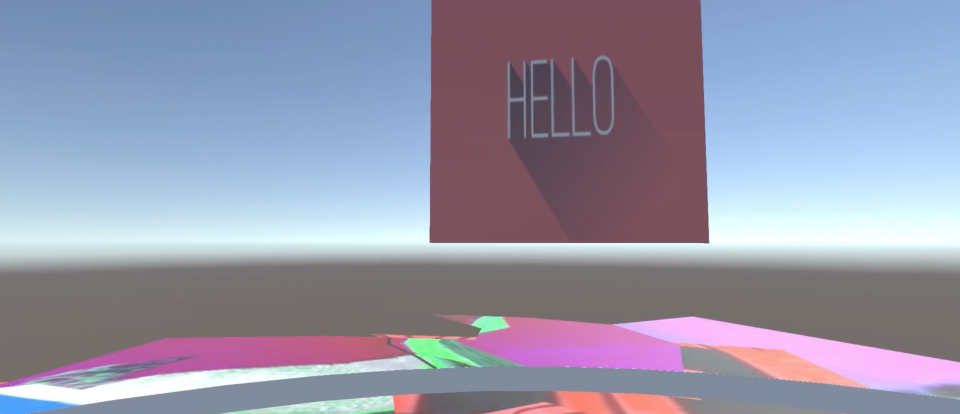
Interview with Lee Tusman
Posted on February 16th, 2018
by
Sofia Staab-Golkbenkian
Today we interview Lee Tusman about his thesis project Mess.life, a digital tool and artspace designed for online collaboration in three-dimensions and inspired by warehouse artist culture and DIY.
Lee Tusman is a new media artist and curator interested in the application of the radical ethos of collectives and DIY culture to the creation of, aesthetics, and open-source distribution methods of digital culture. His artistic output includes interactive media, video art, net art, experimental videogames, sound art, websites, twitter bots and micro-power radio stations. He enjoys working collaboratively in collectives, on nomadic projects and in ephemeral spaces.
Your project Messlife is described as inspired by “the tradition of warehouse art spaces and alternative venues”. What did you think those spaces offer that is missing from online spaces?
I’m thinking most specifically of the DIY collectively-organized art spaces that have been an important part of my life. What I love about these places is their constant reinvention and their refusal to fit within categories or disciplines. If people are familiar with this particular scene or community they might think most specifically about stereotypical noise music shows, and yes, these are a part of those spaces, as well as art exhibits, but the spaces I’ve been a part of have also held artist wrestling matches, DIY robot battles between robots built by children versus adults, hip hop karaoke nights, battles between invasive noxious weeds, and a ‘biennial’ that ran on a budget bus between several cities, and hundreds of more events or activities.
The nature of these spaces is that an alternative community forms, and that new ideas are proposed and held, or just spontaneously develop. I find them more exciting than traditional straightforward gallery schedules with their staid monthly exhibition opening and polite wine and cheese. In most gallery spaces, the purpose is to show art, sell it, and to ‘progress’ along some invisible line of stature until one has won the art game. In museums, which can be thought of as sites to serve art objects and to serve communities in a didactic or educational role, the particular role of the institution is often static and bounded by specific categories such as education, curatorial, Thursday night concert, kids’ programming, professional talk, etc. I’m really mostly interested in spaces that don’t conform to these categories and subvert them. That’s where the most exciting parts of art and community live for me.
So online communities are lacking the inventiveness and freedom these spaces provide?
I find these categories online as well. I’ve been active on the internet since I was young and online in the early 90s. In that era, I felt a certain freewheeling anarchy and openness, and a particular DIY feel. I created pages on Geocities, which had you choose a neighborhood and street I believe, which generated your URL, in order to create a feeling of community around topics. Myspace was the first social media I joined, in 2004, and I remember the Myspace editor which let you easily customize your page with images, music, fonts and colors, and the ability to choose friends and interact in a group. But the kinds of interaction and possibilities felt very limited and still does. Where is the online equivalent of those multi-disciplinary category-defying DIY spaces today? Is it in a Slack channel? A Dropbox folder? I do find some examples, such as the DIY videogame community on the forums of Glorious Trainwrecks, or the constant reuse and digital trash on (recently closed) Dump.fm. Messlife grew out of conversations with people from DIY spaces as well as an attempt to interpret how they could function digitally in online 3d space.
Messlife seems to exist somewhere between an interactive space, a game, and an art project itself. How did you choose the kinds of interactivity that users are allowed in mess.cafe?
At first, I looked to Second Life and Minecraft as online spaces. These are virtual environments that allow a ton of personalized creation to occur. They could be described as game-like environments, but they are generally not used to play a game. Instead, the emphasis is on building structures and sometimes some form of online ‘hanging out’ or chatting. I thought about using one of these spaces to build a new smaller DIY community using the tools of that particular world. What would an online squat look like? I spent time looking at how artist communities inhabit the space and the kinds of community and tools are present on these platforms. Ultimately, in the spirit of DIY I decided to make my own new space and to find others that may want to build it and shape it with me. I had lots of ideas for what could potentially be done in the space such as collaborative building and creating of the environment itself, as well as having a space that makes it easy to perform or create audio. I also had a very small timeline for completion, and had to rely on my own skills and skills and interest of friends that could help create it. Messlife was built with help from lots of friends at UCLA GameLab and Design Media Arts, as well as with networking and lead engineering with John Bruneau who I got to know through Babycastles in New York City. Each step of the way in building it I got people to try it out and give feedback and tried to integrate that feedback or allow people to modify the code or digital objects.
I wanted to make a space that allowed you to quickly jam or spawn objects, which could be considered art or junk or both. And I wanted to make a tool or platform that de-emphasized individual action and instead emphasized working collaboratively. This influenced the creation of a shared image-bank, an open world, and the ability to quickly create huge objects with a simple click on an image from the shared image bank. Over time I’d like to add other ways to build things and to perform or act or meet in the space.. I’d also like to build out a way for people to propose events that could be held in the space such as concerts, talks, exhibits, and more.
As a space, Messlife is much freer than most digital environments with three-dimensionality. How did you think of embodiment when you were developing Messlife?
I had a lot of questions myself on what form a player or participant would take. Should you be able to design a character or avatar, or a simple icon? I was hesitant to implement this because I didn’t want the emphasis to be too strongly individualistic. I wanted there to be a sense of collective work and effort. In the end, I created a compromise: you could use any image from the shared image bank and that would wrap around a simple 3d shape that would represent you. Images could be easily changed at any time. You can also change the camera view to be a top-down world view, and in that view you see everything and lose yourself in the entire scene. It transforms the space into a complex and flattened work of digital art with a view of what has been made together, and I find that exciting.
You also describe Messlife as “a free (as in radical) software project”. How do you contrast this to other software projects that are described as “free” in a layman sense?
To be honest, I made this phrase up because it seemed to capture the spirit of what I’m trying to build. Messlife is an attempt at building a radical utopian environment for collaborative building, hanging out, and visually jamming. The code is also freely available online, and anyone could fork it and make their own version(s).
You cite Brandon Avery Joyce and the Philadelphia Institute for Advanced Study as influencers on messlife. Can you say more about that?
Brandon started The South Philly Athenaeum, a collective DIY art space that existed from 2004 – 2005 in Philadelphia and lives on through an online archive with images, concert and event listings, articles, journal entries, and documentation of its eviction. Over its year of existence there were concerts, art shows, philosophy discussions, film screenings and festivals, a discussion about Andy Kaufman, a rollerblading event, a japanese comics event, a haunted house, and a superbowl party, among numerous other events, happenings and spontaneous convergences. I asked him about collaborating on a project. My initial impulse was to build a 3D recreation of The South Philly Athenaeum, a type of time-based interactive 3D documentary, with Joyce as tour guide. Part of Brandon’s motivation for participating in DIY spaces is their ability to create a compounding of energy through a critical mass of participation. We talked about what that looks like or could look like online. Joyce references skateboarding as an enviable form of organization as it takes many asynchronous forms and the splintering and rejoining of groupings, leading to multiple diverse outcomes over time. Joyce was also interested in the possibility of piggybacking off another online tool or community, almost like squatting, by having a group of people appropriate a forum or other online space already in existence, or creating a new type of group or organization. From out of these conversations the idea of Messlife as a starting experiment began to grow. (excerpts from Messlife, A Virtual DIY Artspace).
What kind of art practices do you see taking place inside of Messlife? Has anyone attempted to use Messlife for projects that you were not directly involved in?
Now is the time for me to get the word out. I’ve had a number of people (friends and word of mouth) contact me about hosting events in the space. It will be presented at Artopia at the end of August, and will serve as a space during the next iteration of The Wrong Biennial.
Are there any aspects of messlife that you would like to see grow?
My hope is for an organic community to grow within and shape the future of this online space.

